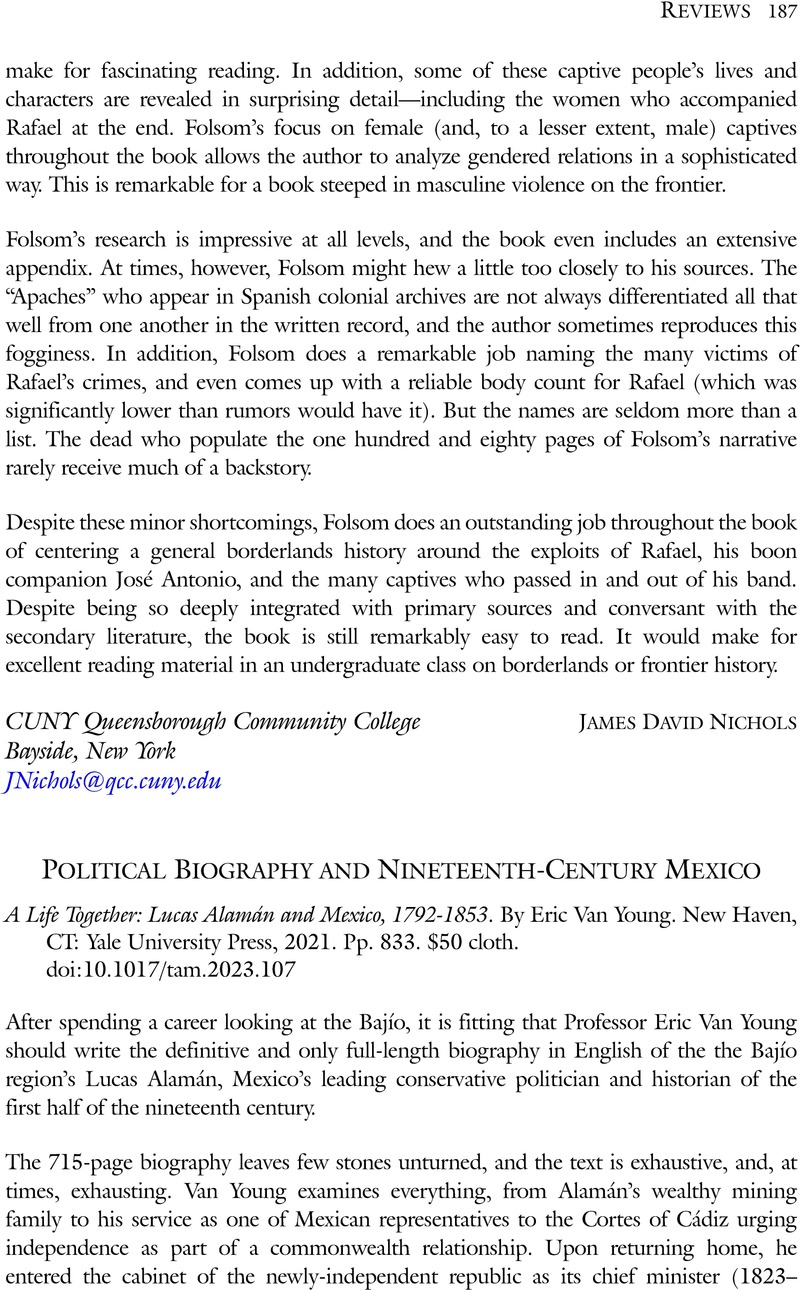No CrossRef data available.
Article contents
Political Biography and Nineteenth-Century Mexico - A Life Together: Lucas Alamán and Mexico, 1792-1853. By Eric Van Young. New Haven, CT: Yale University Press, 2021. Pp. 833. $50 cloth.
Review products
A Life Together: Lucas Alamán and Mexico, 1792-1853. By Eric Van Young. New Haven, CT: Yale University Press, 2021. Pp. 833. $50 cloth.
Published online by Cambridge University Press: 21 March 2024
Abstract
An abstract is not available for this content so a preview has been provided. Please use the Get access link above for information on how to access this content.

- Type
- Book Review
- Information
- Copyright
- Copyright © The Author(s), 2024. Published by Cambridge University Press on behalf of Academy of American Franciscan History


